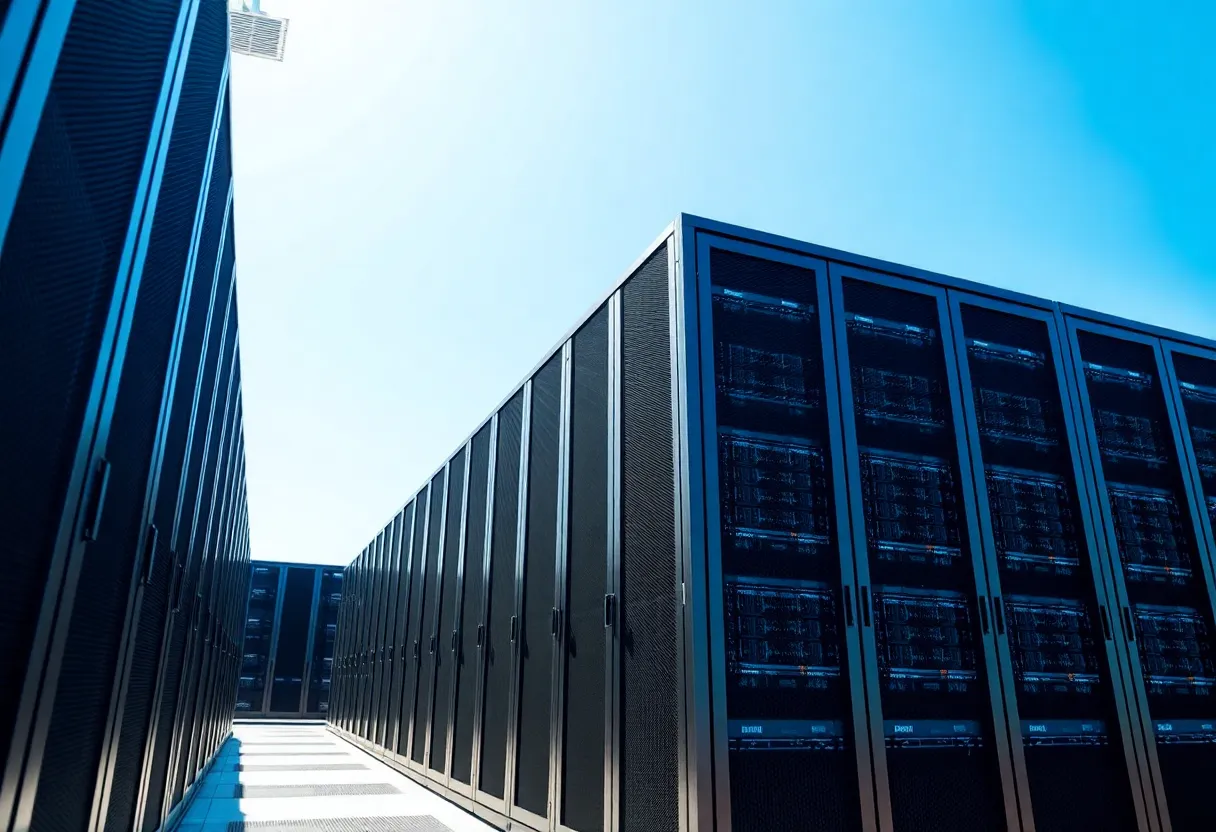New Mexico, September 25, 2025
News Summary
Intense competition among hyperscalers in the cloud computing and AI markets is fueling rapid data center growth. Developers are innovating financing solutions to enhance their infrastructure, with big projects requiring massive power capacities and substantial investments. Recent developments include a $165 billion AI data center in New Mexico and Meta’s $29 billion Hyperion project in Louisiana. As the financing landscape evolves, strategies are becoming more sophisticated, making effective capital planning crucial for developers looking to secure funding and optimize costs in this competitive market.
Intense Competition Ignites Growth in Data Center Development
The competition among hyperscalers for dominance in the cloud computing and artificial intelligence (AI) industries has dramatically escalated, creating a capital-intensive race toward the development of data center infrastructures. As industry players strive to gain an edge, a notable surge in investment and innovative financing solutions has emerged, specifically tailored to the distinct challenges associated with large-scale data center projects.
Massive Financial Requirements
Today’s data center projects often demand power capacities exceeding 1 gigawatt and construction costs that can reach into the billions of dollars. The financing of these extensive undertakings is primarily facilitated through project-level construction debt. This form of financing is designed to cover both hard and soft costs associated with building data centers, spanning the construction phase and the initial operational phase, typically lasting between 3 to 5 years.
Unlike traditional real estate ventures, financing for hyperscale data centers incorporates various elements beyond the value of the physical property. This unique approach recognizes the complexities and innovations associated with contemporary data centers, which prompting lenders to adapt their underwriting criteria.
Innovative Financing Solutions
The data center financing market is experiencing a remarkable transformation, characterized by increasing sophistication among developers, lenders, and related professionals. Developers are urged to present coherent narratives that effectively address common diligence, tax issues, structuring challenges, and local community concerns to secure necessary financing.
Lenders require a comprehensive set of project documents, including leases, construction contracts, and third-party reports like appraisals and environmental assessments, before extending financing. In a competitive landscape, rapid transitions from land acquisition to initial funding processes emerge as critical differentiators for success.
Mitigating Risks with Flexible Financing
While project-level debt serves as a crucial funding avenue, holding company (HoldCo) financing can complement this debt, providing operational flexibility to manage unforeseen delays and cost overruns. Once a data center becomes operational and begins generating predictable lease revenue, its risk profile changes significantly, leading to a transition from construction debt to permanent financing.
The range of takeout financing options available appears robust, including syndicated loans, private placements, and asset-backed securitizations (ABS). These options frequently offer more favorable conditions when compared to construction loans, facilitating developers’ objectives of achieving sustainable financial operations.
Recent Developments in Financing
The financing landscape for data centers is steadily evolving, blurring the lines between project, real estate, and leveraged finance. This progression underscores the necessity for coherent capital planning that aligns seamlessly with asset life cycles. In this context, proactive collaboration among finance, construction, tax, and legal teams remains essential, as it helps developers to optimize capital costs amidst intense competition.
Major Projects on the Horizon
Nscale, a developer prioritizing AI-focused data centers, has successfully secured $1.1 billion in financing from a range of reputable investors, marking a significant achievement in the sector. Additionally, Doña Ana County officials have approved financing for a groundbreaking $165 billion AI data center, referred to as Project Jupiter, which anticipates the creation of 800 permanent and 2,500 construction jobs.
This New Mexico data center will specialize in AI training and is funded through industrial revenue bonds, despite generating concerns over its impending water usage and environmental impacts. Meanwhile, Meta is nearing a massive $29 billion financing deal for a gigawatt-scale data center project named Hyperion, located in Louisiana. This deal comprises $26 billion in debt and $3 billion in equity, with the project expected to span multiple buildings over approximately 4 million square feet throughout various phases of construction extending until 2030.
Furthermore, Blue Owl Capital has made notable investments in the data center sector, underscoring a growing trend in financial partnerships as the industry continues its rapid expansion.
FAQ
What competition is driving growth in data center development?
The competition among hyperscalers for market dominance in cloud computing and artificial intelligence (AI) has intensified, leading to a capital-intensive race for data center infrastructure development.
What are the power capacities and construction costs associated with data centers?
Data center projects can require power capacities exceeding 1 gigawatt and initial construction costs running into billions of dollars.
What innovative financing methods are developers using for data centers?
Developers are utilizing a variety of innovative financing solutions tailored to the risk profiles of modern data center projects, which are often massive, single-tenant campuses.
Key Features of Data Center Development and Financing
| Feature | Description |
|---|---|
| Competitive Landscape | Increased competition among hyperscalers is driving growth in data center development. |
| Financing Needs | Data center projects require power capacities of over 1 gigawatt and can cost billions to construct. |
| Project-level Debt | Construction debt finances the hard and soft costs of data centers during construction and initial operation. |
| Flexible Financing | HoldCo financing complements project-level debt to provide operational flexibility. |
| Recent Funding Trends | Blue Owl Capital and other financial institutions are making significant investments in the data center sector. |
Deeper Dive: News & Info About This Topic
Additional Resources
- Skadden Insights: Hyperscaler Data Centers
- Wikipedia: Data Center
- Natixis: Data Centers & Capital Markets
- Google Search: Data Centers
- Bloomberg: Nscale Fundraising
- Encyclopedia Britannica: Cloud Computing
- Data Center Dynamics: Meta Financing Report
- Google News: AI Data Centers
- Reuters: OpenAI and Debt Finance
- Google Scholar: Hyperscale Data Centers
Author: Construction CA News
The CALIFORNIA STAFF WRITER represents the experienced team at constructioncanews.com, your go-to source for actionable local news and information in California and beyond. Specializing in "news you can use," we cover essential topics like product reviews for personal and business needs, local business directories, politics, real estate trends, neighborhood insights, and state news affecting the area—with deep expertise drawn from years of dedicated reporting and strong community input, including local press releases and business updates. We deliver top reporting on high-value events such as the Rose Parade, Coachella, Comic-Con, and the California State Fair. Our coverage extends to key organizations like the California Building Industry Association and Associated General Contractors of California, plus leading businesses in technology and entertainment that power the local economy such as Apple and Alphabet. As part of the broader network, including constructionnynews.com, constructiontxnews.com, and constructionflnews.com, we provide comprehensive, credible insights into the dynamic landscape across multiple states.




